Since Windsurfing only makes use of the forces of nature, namely the wind or waves, no other energy sources are required to enjoy this sport.
Specifically, no fossil fuels have to be burnt, unlike riding a jet ski, motorboat, or many other motorized hobbies. Likewise, no batteries have to be charged or anything along those lines.
In short, the activity of windsurfing in and of itself is one of the most eco-friendly available, just like jogging, cycling, swimming and others.
However, if we look at the broader effects directly related to windsurfing, then we paint a very different picture – one where it becomes clear that windsurfing does have negative effects on the environment and a lot of room for improvement in that regard.
- The Negative Environmental Effects of Windsurfing
- 8 Tips to Limit Your Environmental Footprint
- Conclusion
- You Might Also Like…
Disclosure: this post contains affiliate links (clearly marked with ), which means we may earn a commission if you buy something through them, at no additional cost to you.
The Negative Environmental Effects of Windsurfing
For a sport that’s so integrated into nature and dependent on the natural elements like wind and waves, it is really quite surprising that most windsurfing brands haven’t made a bigger effort yet to preserve our environment and reduce their negative impact on it.
The crux of the matter is that windsurfing equipment is almost always made of virgin oil-based plastic and toxic materials like PVC, epoxy resin hardeners, and more.
Not only is the drilling of the raw material (oil) as well as the manufacturing of plastic products unsustainable and harmful to the environment.
But all of that plastic is also non-recyclable at the end of a board’s or sail’s life cycle, so it will contribute to our worldwide pollution.
After all, the increasing plastic pollution of our oceans is a major problem, and windsurfers come in direct contact with the ugly results of this issue every time they enjoy their sport.
As a result, seeing this unsustainable manufacturing process of windsurfing gear as well as using non-recyclable plastics and toxic chemicals stands in stark contrast to the intimate integration of windsurfing into nature.
Fortunately, there is hope, because a few well-known windsurfing brands have started researching and implementing ways to replace plastic and toxic chemicals in their board production process with eco-friendly and sustainable alternative materials.
8 Tips to Limit Your Environmental Footprint
Although Windsurfing in and of itself is a very eco-friendly activity, there are several factors directly or indirectly related to this sport that have a negative impact on the environment.
We’ll go over the main points and look at things you can do to reduce the environmental damage of windsurfing.
1. Choose Eco-Friendly Means of Travel
Even though planing over the water emits no greenhouse gases at all, the plane you took to get to your favorite windsurfing spot did emit considerable amounts of CO2 and other pollutants.
As you can see, how you get to the beach or lake of your choice is already a major decision that impacts how the overall eco-balance of your windsurfing activity turns out.
Obviously, riding your bike or walking are not only the healthiest, but also the most environmentally friendly modes of transport.
But it’s equally evident that walking or bicycling is not a viable option for most people – unless you happen to live very close to the beach or lake and you store or rent your equipment right there.
Nevertheless, you can make a deliberate choice to reduce your environmental impact as much as possible. Carpooling with other windsurfers is not only a great way to enjoy the ride to the location, but also to cut the carbon emissions in half.
Aside from these considerations, staying close enough to your windsurf spot (within walking or cycling distance) during holidays means you won’t have to take the car every day.
Outside of your holidays, camping right by the windsurfing spot or renting a cabin or apartment nearby may be a great choice for any weekend throughout the year.
It will save you valuable traveling time to and from your home – and protect the environment from avoidable air pollution.
2. Keep the Beach and Water Clean
Most windsurfers have a keen appreciation of nature and its beauty. Therefore, they will instinctively try to preserve the environment whenever possible.
As a result, littering the beach or water should be an obvious violation of this code of conduct. At the very least, leave the place in the condition you found it in – meaning don’t leave any trash behind.
Since it’s most likely going to be windy, littering can happen unintentionally when the wind is blowing some of your stuff away, so be aware of that.
Better yet, leave the spot cleaner than it was when you arrived. Nowadays, we windsurfers (unfortunately) are faced with plastic pollution pretty much on a daily basis.
But this is also a great opportunity to take positive action. See a plastic straw on the beach? Pick it up. A plastic bottle or bag floating in the water? Grab them and dispose of them properly.
It’s a tiny effort for each of us, but these seemingly small impromptu beach cleanups add up to a considerable positive impact over time.
You don’t have to go out of your way and scour the beach for hours. Just keep your eyes open as you’re walking in the direction you’re headed in anyway.
Even if you “only” pick up one plastic straw – if that saves a turtle from choking on it, wasn’t it worth it already?
3. Take Care of Your Equipment
Keeping in mind that virtually all parts of your windsurfing equipment are non-recyclable, make your best effort to preserve your gear as long as possible to avoid having to buy new gear (plus, you’ll save a lot of money as well).
Check your sail, board and other parts regularly for even the slightest signs of wear and tear, and repair them immediately.
For instance, a small hole or rip in the sail can easily be fixed, but if you don’t take care of it right away, it may rip further and may make it much more difficult or even impossible to repair it.
The same goes for your board. As soon as you see even a tiny crack, repair it immediately. Otherwise, water may enter and the foam core will soak it up like a sponge, which will ruin your board.
4. Buy Used Equipment
Every piece of equipment that’s not bought new is a piece that doesn’t have to be produced in the first place and therefore will not require the harmful and polluting plastic production process.
Additionally, if you buy used equipment, you also save that kit from going to landfill – or worse – from ending up in nature and polluting our environment indefinitely.
Again, the welcome side effect is that you will not only protect the environment, but also save quite a bit of money, since second-hand windsurfing gear usually offers great value for money.
5. Use Your Equipment as Long as Possible
Do you really need the latest sail or board that came out this year?
Windsurfing equipment doesn’t really undergo significant drastic changes regarding shapes and performance anymore (as it used to back in the ’90s and early 2000s).
Nowadays, even if you own 5 or 10-year-old equipment, it will perform really well and you’ll have lots of fun with it for years to come.
So there’s no question of “I need new equipment because mine is too old” (unless status is important to you, or you’re a professional windsurfer).
Of course, this requires you to take good care of your equipment, as mentioned above. But if you do, you won’t have to buy new gear for years to come, saving the environment and your piggy bank.
6. Buy Eco-Friendly Gear
As mentioned earlier, some of the leading windsurfing brands have recognized that their products are actually contributing to the global plastic pollution problem.
Fortunately, some of them have decided to become part of the solution instead of remaining part of the problem.
The well-known B-Corp certified brand Starboard for instance has started planting 1 mangrove tree and removing 200 plastic bags from the ocean for every board sold.
They’ve also invested into their sustainable headquarters to run largely on solar power, and their major R&D effort is to replace all of their hard board’s foam cores with recycled plastics and eventually with natural materials.
Fanatic also started replacing non-sustainable plastic and toxic materials used for their boards with flax, wood, cork and plant-based bio resin in their Gecko Eco freeride board.
If you want or need to buy a wetsuit, don’t buy a conventional neoprene, which is not biodegradable and harmful to the environment.
Instead, go for an eco-friendly alternative made from natural materials and recycled plastic, or by from companies who are committed to reducing their environmental impact, like Xcel Wetsuits for example.
7. Respect Wildlife & Protected Areas
Make sure to never sail near or through protected areas where animals may have their breeding grounds and where you might damage fragile habitats.
Even though you are not polluting the environment like a motorized vessel would, you will still disturb nearby wildlife.
This will not necessarily be relevant for all beaches or lakes, but ask around if there are any protected areas nearby which you should be aware of and steer clear of them.
8. Use Ocean-Friendly Sunscreen
Windsurfers are exposed to the elements, including the sun’s UV rays. For that reason, most of us regularly apply sunscreen to protect our skin from the UV rays’ damaging effects.
This is all well and good, but most people are not aware that conventional sunscreen can not only be a health hazard, but is known to be very toxic to marine life – especially coral reefs.
For that reason, make sure to switch to natural, non-toxic and ocean-friendly sunscreen. It’s a win-win decision, for you and for the ocean.
Conclusion
While windsurfing itself may be a very environmentally friendly sport, the equipment used for it is usually not eco-friendly at all. It’s made of non-recyclable materials, some of them outright toxic.
So what’s the eco-conscious windsurfer to do?
Some of the steps you can take to mitigate your environmental impact are to buy used equipment, take good care of it and follow the other practical tips mentioned in this article.
Another thing is to support brands that are actively trying to change the status quo by buying their eco-friendly and sustainable equipment.
You Might Also Like…
-
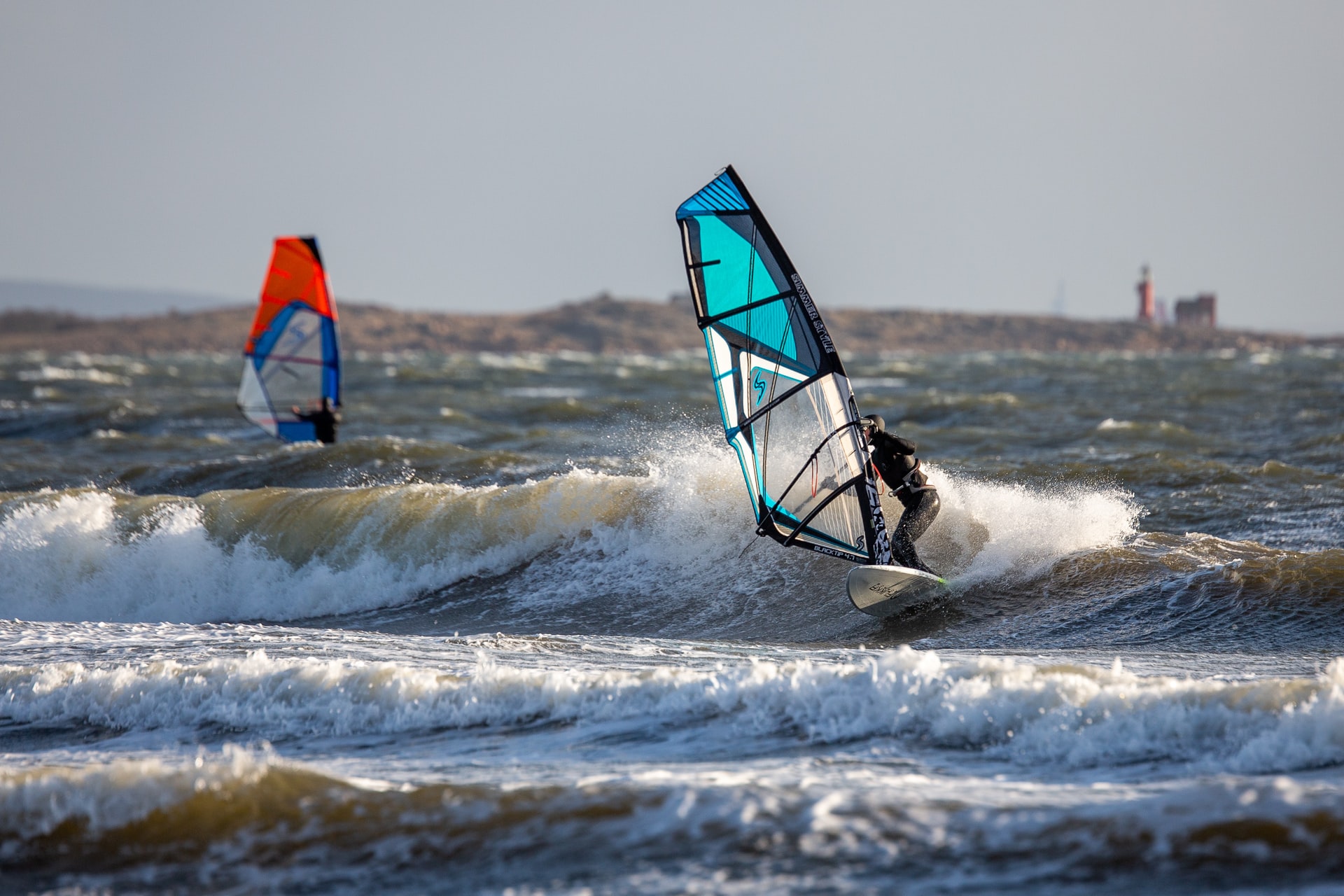
Surfing vs. Windsurfing: 8 Major Differences (& 4 Similarities)
-
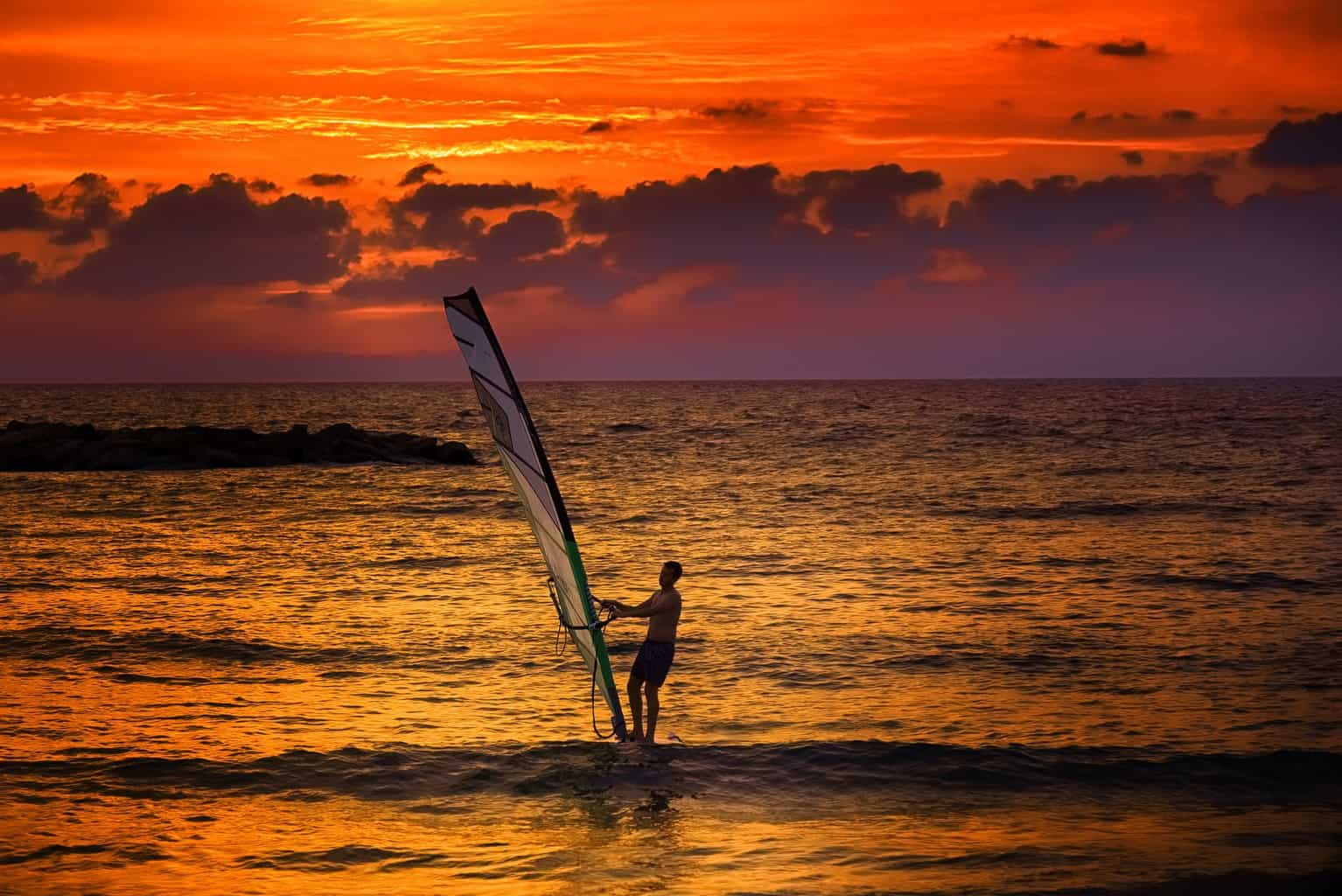
How Does Windsurfing Affect the Environment? (+8 Practical Tips)
-
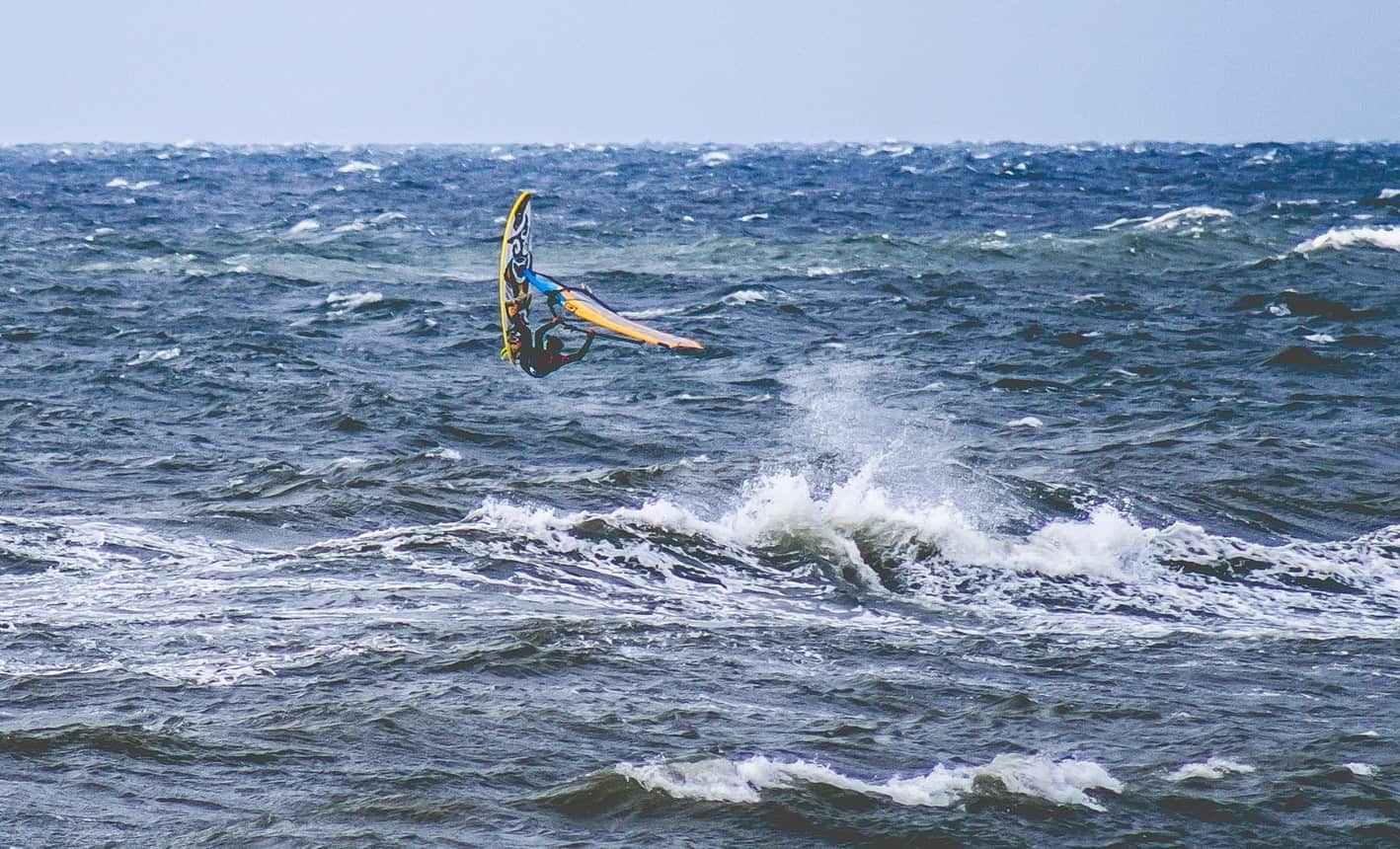
Is Windsurfing Dangerous? 14 Risks (& How to Avoid Them)
-
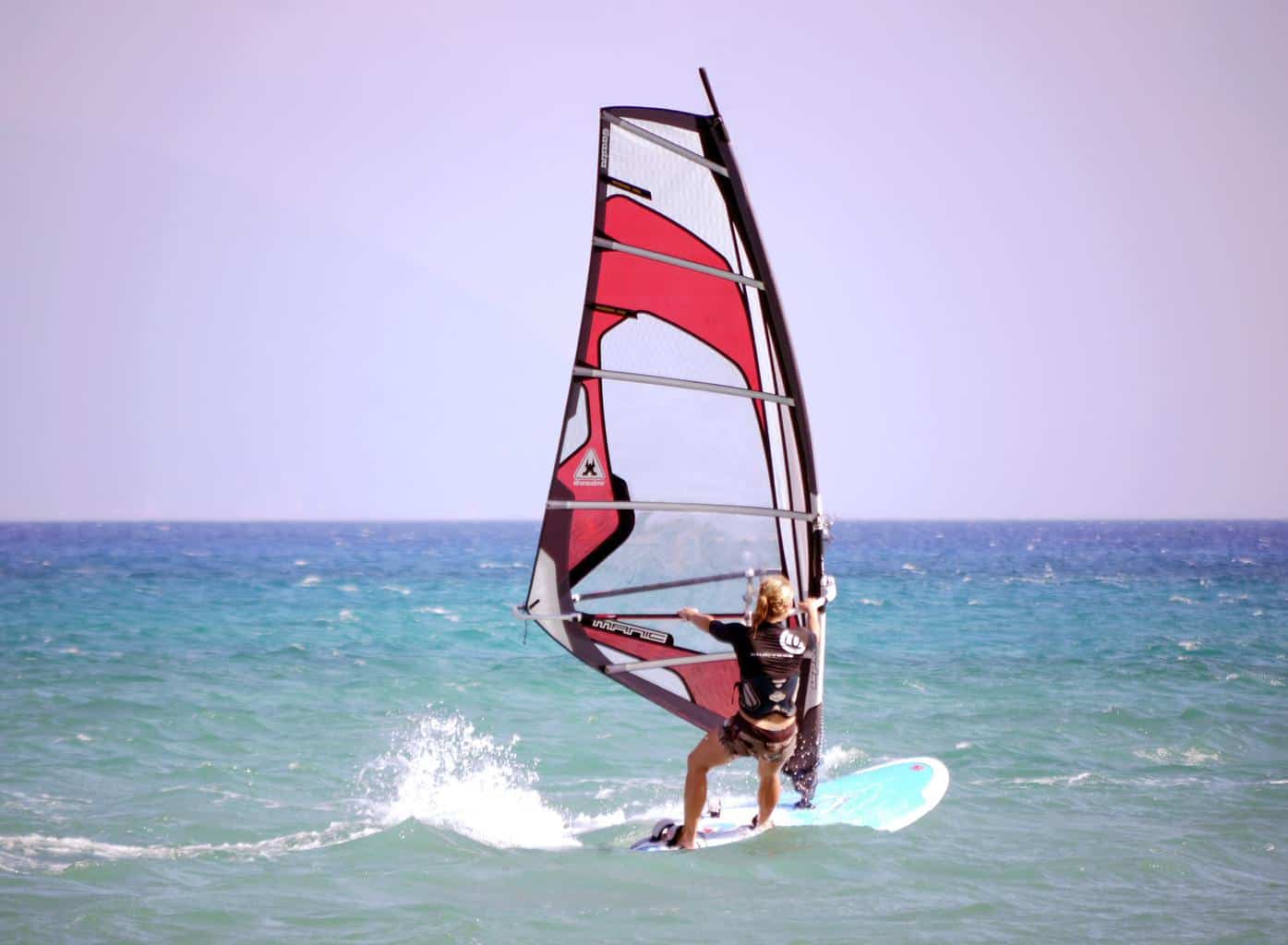
Windsurfing – 7 Common Beginner Questions (Answered)
-
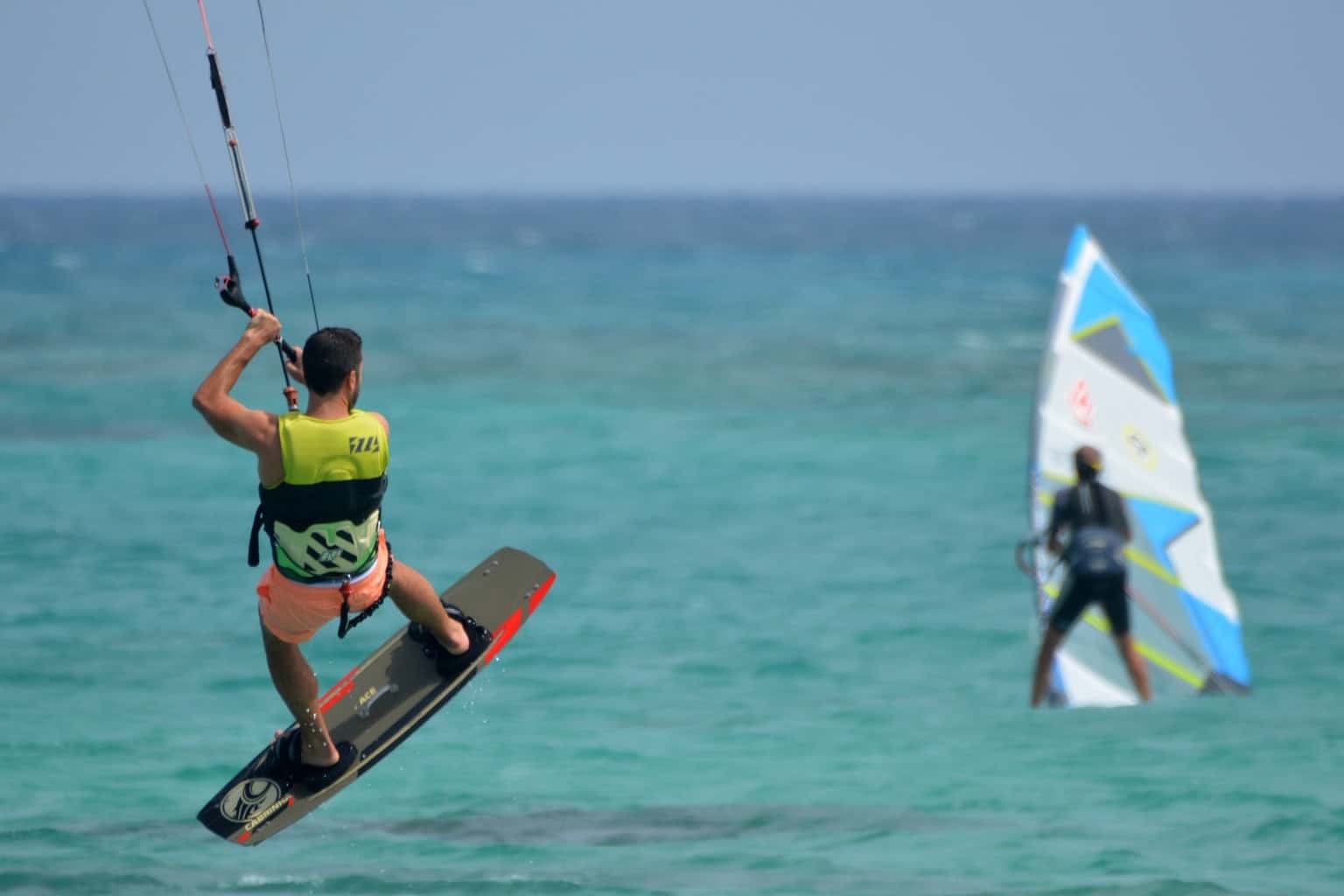
Is Windsurfing Faster Than Kitesurfing? (An Honest Look at the Facts)
-
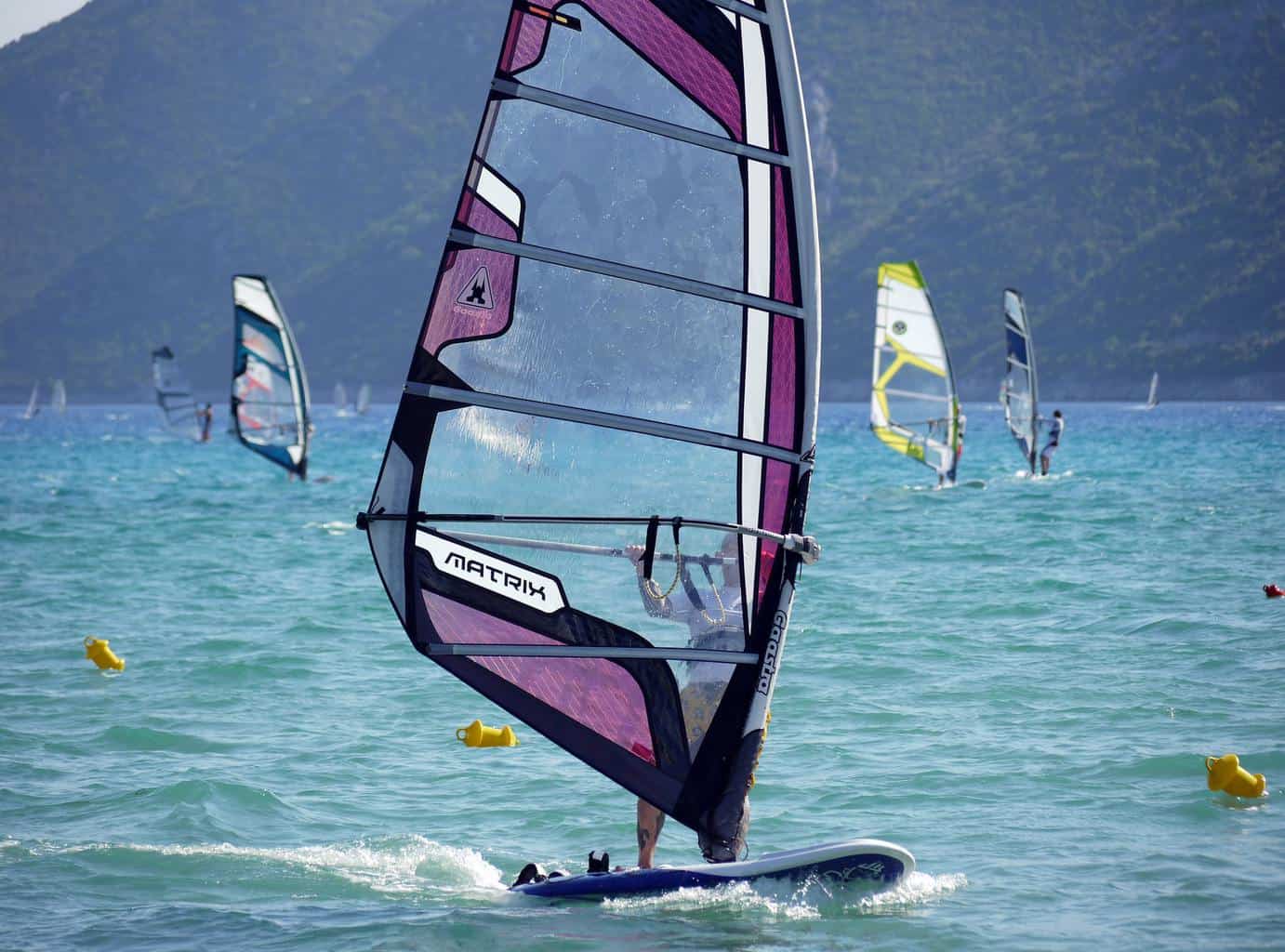
How to Choose the Right Windsurfing Sail Size (With Chart)
-
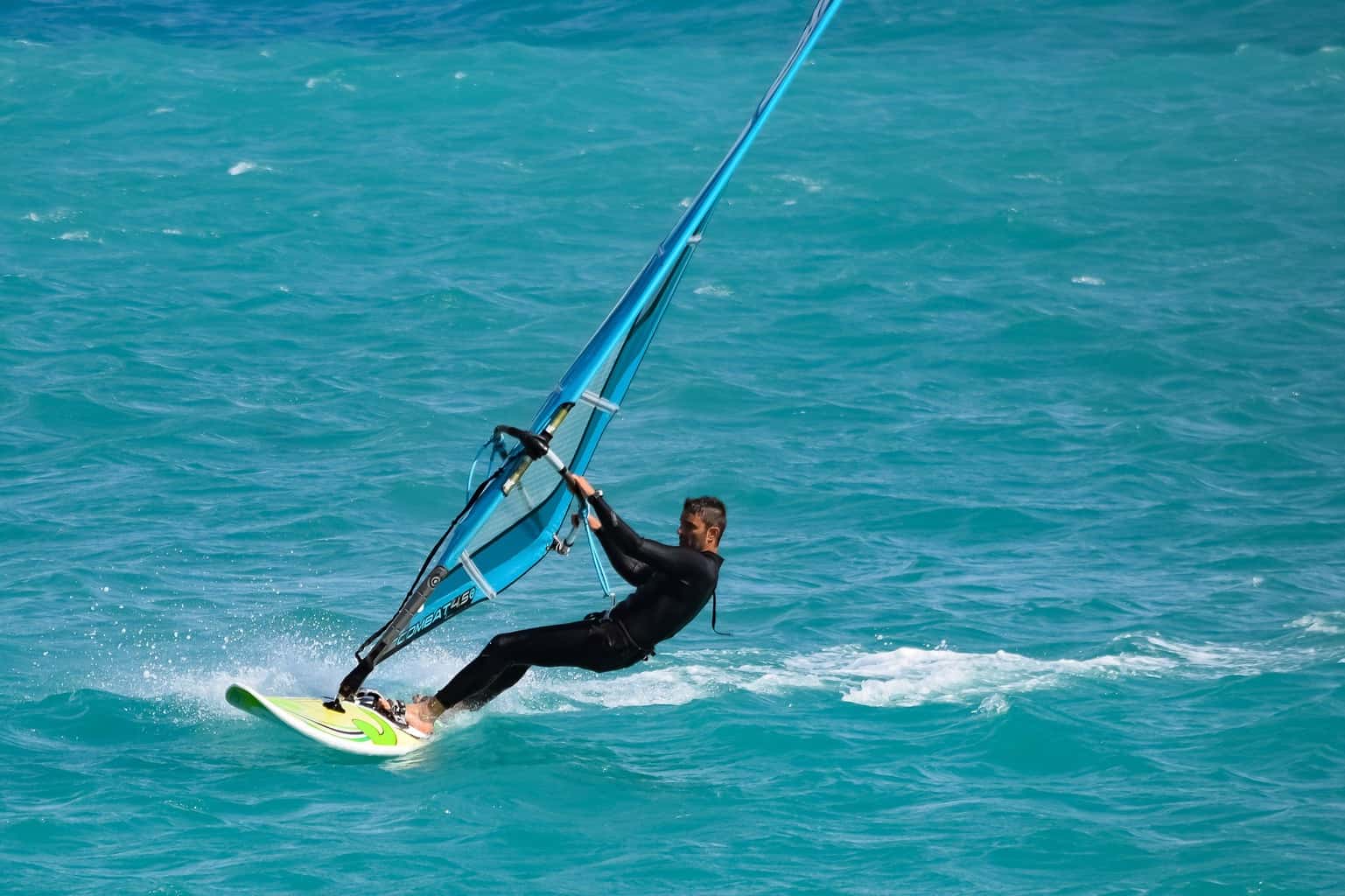
Windsurfing: How Much Downhaul Is Needed? (Essential Facts)
-
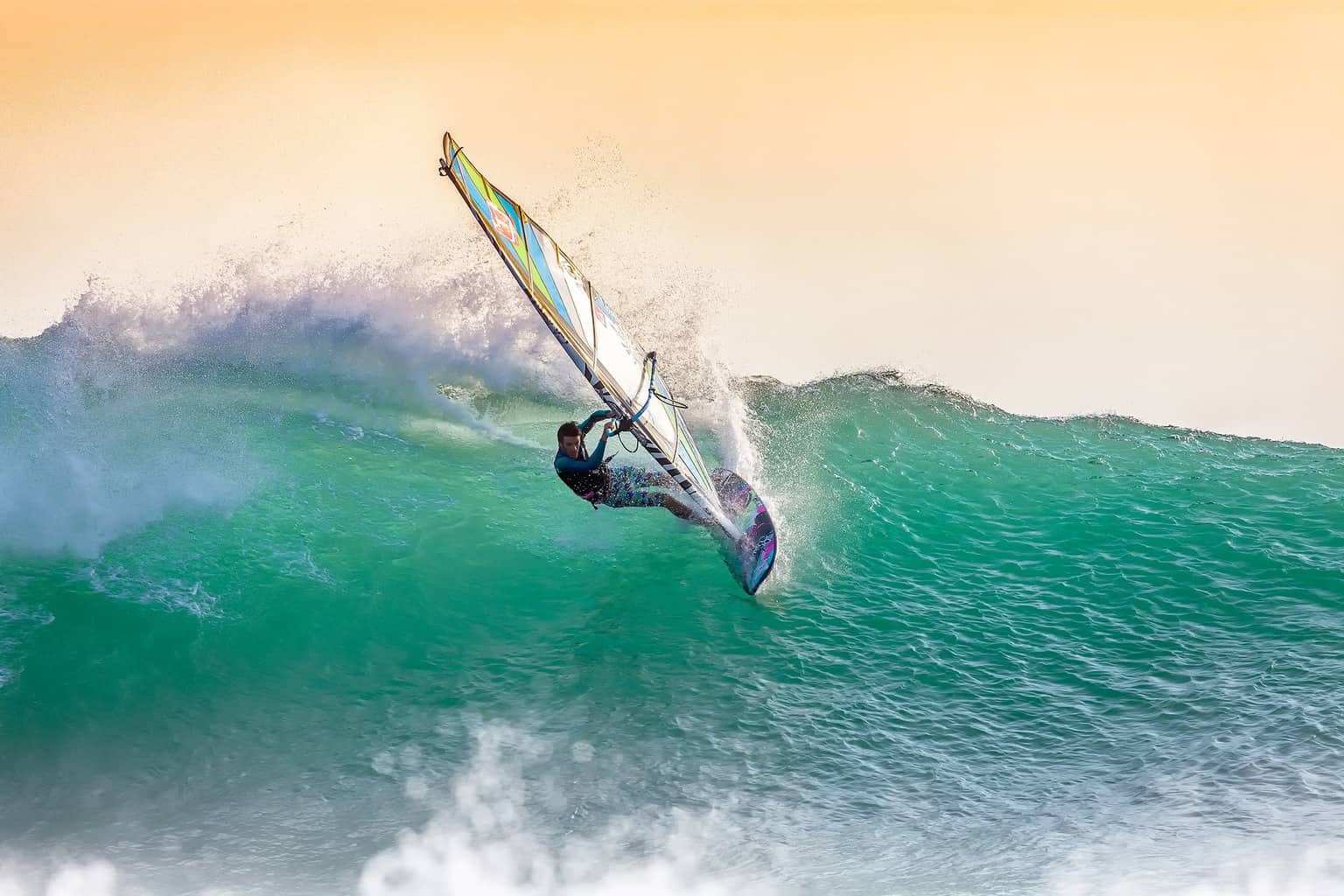
Is Windsurfing an Extreme Sport? (All You Need to Know)
-
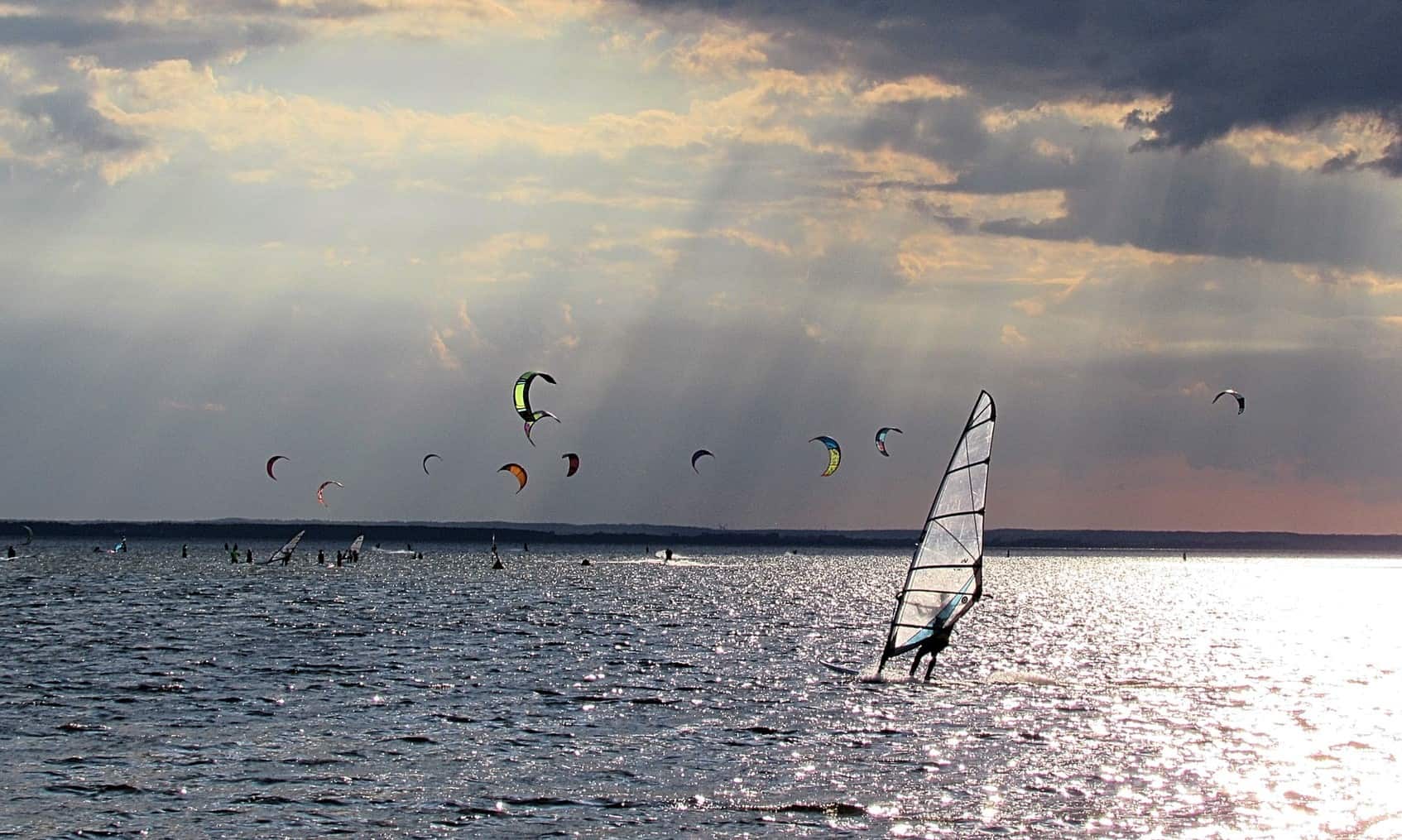
Is Windsurfing Easier Than Kitesurfing? (An Honest Comparison)
-
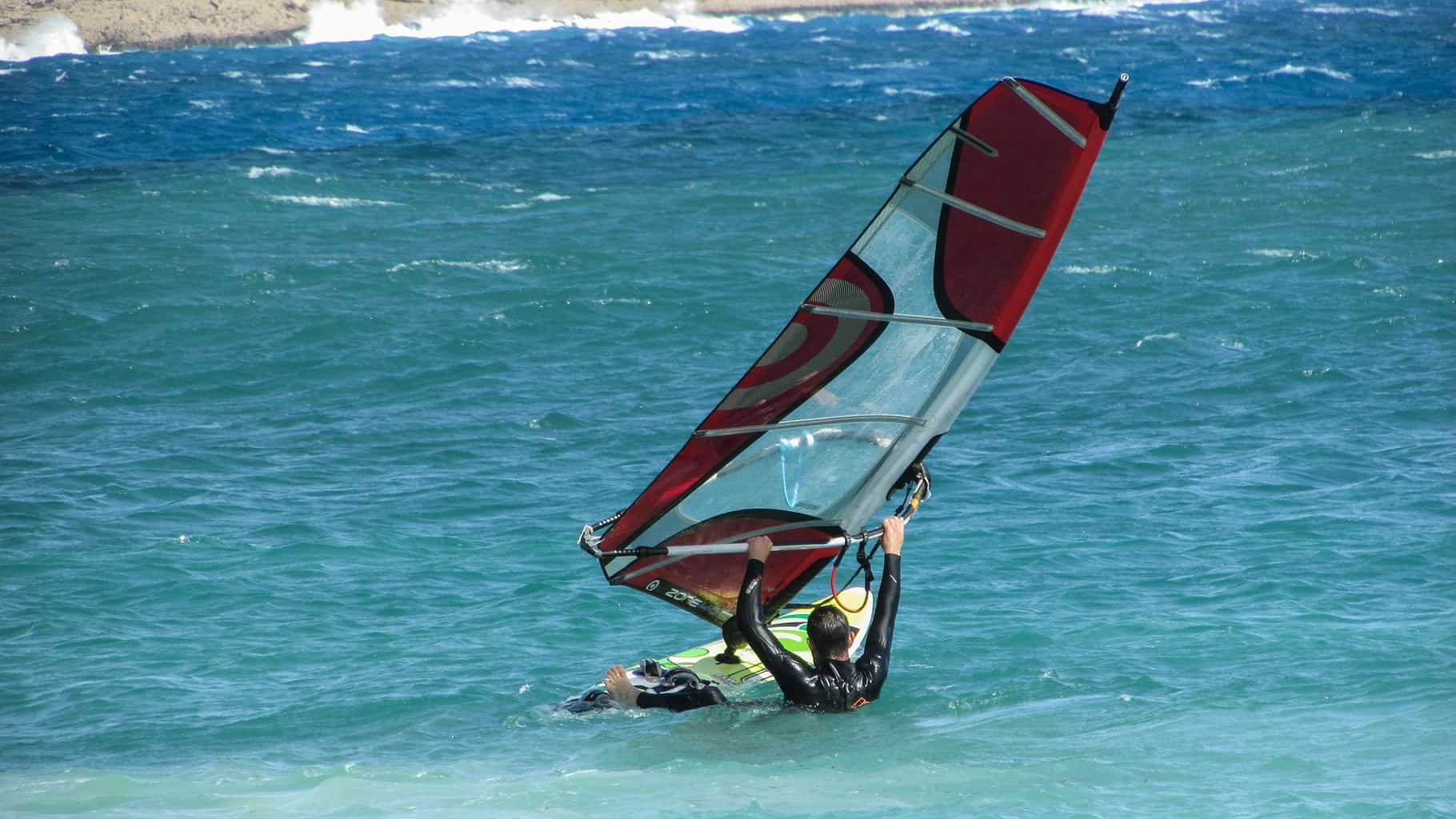
Is Windsurfing Harder Than Surfing? (Honest Comparison)
-
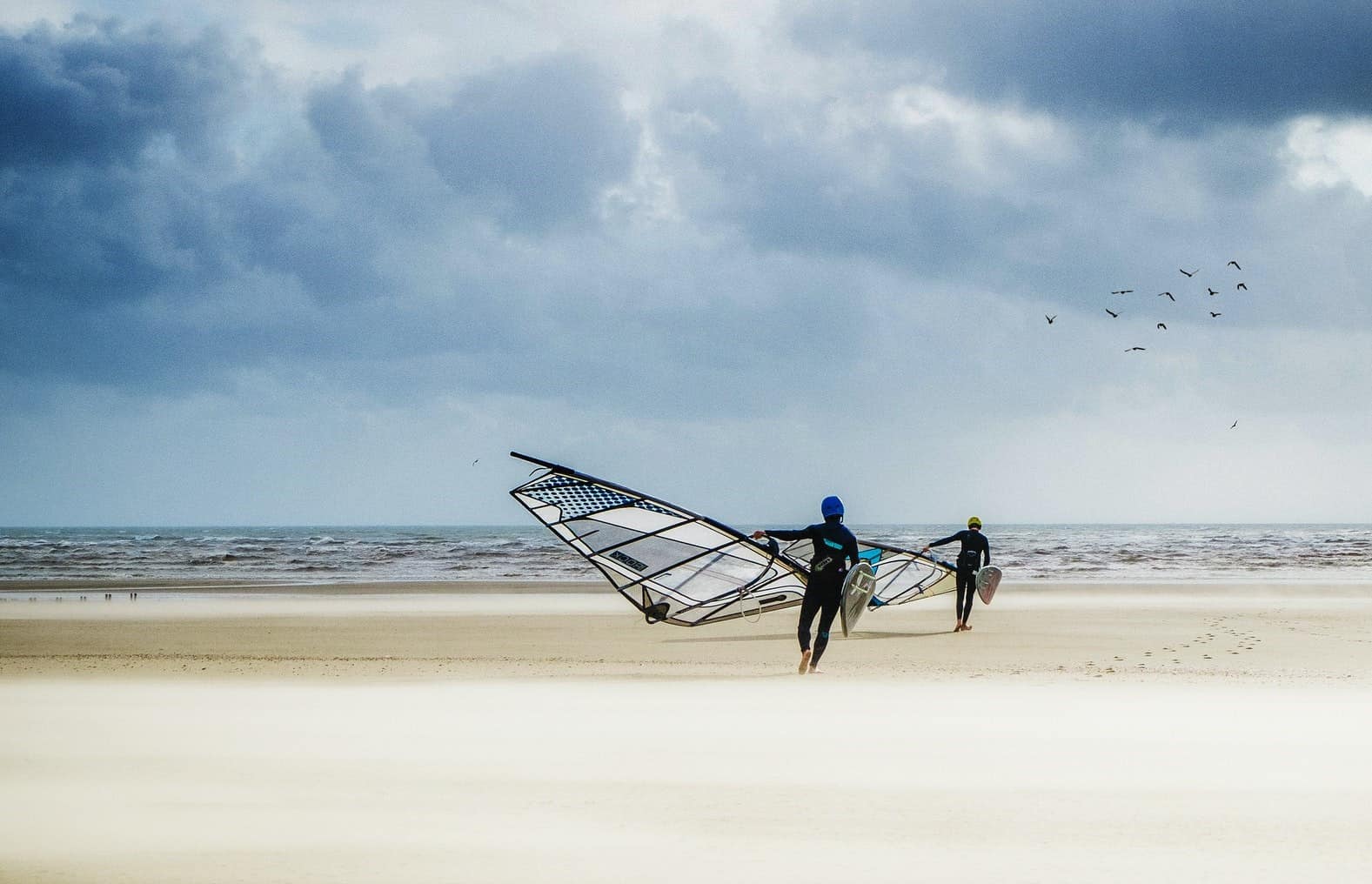
Is Windsurfing Still Popular? (An Insider’s Look at the Facts)










